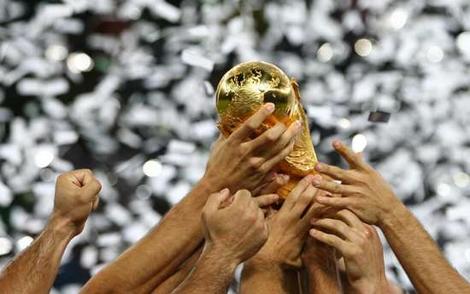If 2016 has taught us anything, it is not to kid ourselves that we can see too far into the future. With that proviso, it looks ever more probable, almost a decade before the first ball is actually kicked, that the United States will have a leading role in hosting the 2026 FIFA World Cup.
The latest pieces slotted into place at last week’s meeting of the FIFA Council (the rebranded, super-sized Executive Committee) in Zurich.
Piece number one was confirmation that the 2026 World Cup may have an expanded 40 or – heaven help us – 48-team competition format. There is obviously a limit to the number of countries that could cope with a tournament on this scale, and the United States is one of them.
Piece number two was approval of the “general principle” that member associations from confederations of the prior two hosts will be ineligible for 2026, unless no satisfactory bids are received from elsewhere. That means no European and no Asian bidders. Frankly, it is hard to see where else a competitive threat to a half-decent US bid might come from.
Which brings us to piece number three. Piece number three was approval of the general principle that co-hosting of 2026 “will be permitted”, and not only that, is “not limited to a specific number”.
That opens up the prospect of a 2026 bid led by the United States, runner-up to Qatar in the hugely controversial 2022 World Cup bidding process, but also featuring Canada, home nation of CONCACAF President Victor Montagliani, and quite possibly Mexico. That is one juggernaut that would take some stopping.
There are also grounds for thinking that such a combination would leave FIFA President Gianni Infantino pretty content.
For one thing, the commercial possibilities of a World Cup stretching throughout North America would be simply mammoth. This is even though FIFA sold US and Canadian media rights for 2026 as early as February 2015, without waiting to see whether either would be involved in hosting. The way things are looking, Rupert Murdoch’s Fox, NBC Universal’s Telemundo and Canada’s CTV/TSN may have got themselves a bargain – and FIFA ought to be kicking themselves.
For another thing, the key football personalities of the North American region are widely seen as strong Infantino allies.
Sunil Gulati, President of the United States Soccer Federation (USSF), appeared to play a crucial role in Infantino’s election in February. His white hair and bird-like dartings were much in evidence during an interminable one hour-plus second round of voting in which he is assumed to have been beavering away trying to ensure that as many as possible of those who, like the USA, backed Prince Ali bin al-Hussein in the first round, switched their allegiance to the Swiss-Italian candidate.
Canada Soccer was already on board, having voted unanimously to cast their ballot for Infantino. That was all just under three months before Montagliani was elected to what many would see as the poisoned chalice of the CONCACAF Presidency.
Even so, history suggests that FIFA might live to regret it if the CONCACAF colossus turned out to be the only bidder. Much of an event owner’s bargaining power is taken away if it does not have at least two viable candidates to play off against each other at the bidding stage. If the US plus neighbour(s) ends up running in a one-horse race, it would leave it strongly-placed to ensure that a higher than usual proportion of that World Cup’s economic benefits remain with the hosts.
Some may still expect China and Xi Jinping, its football-loving President, to have something to say about 2026, especially given the torrent of Chinese money currently gushing into the game.
I would not think it too tall an order, however, to encourage them to focus their attention on 2030, which after all will be the centenary World Cup. While there is an argument that 1930 host Uruguay would be the sentimental choice for that competition, an expanded World Cup seems to me to make that less likely, even in conjunction with Argentina. If it plays its cards right, and if its interest/investment in the game continues to develop at anything like its present rate, China just might start to look as formidable a contender for 2030 as the US for 2026.
All of which goes to suggest that the only World Cup finals action likely to be staged in Western Europe for the foreseeable future is in women’s football.
There have been interesting developments here too in recent days, with FIFA starting the sales process for the broadcast rights to the 2019 Women’s World Cup in France by launching an invitation to tender for the UK.
This seems a smart move in what may be one of the more competitive markets, given both the unexpectedly strong performance by England in the last competition in Canada and the possibility of interest from pay-TV and new media platforms.
For the sake of the strength of its financial model, FIFA could really do with another cash cow to set beside the quadrennial men’s World Cup, which looks to have been responsible for around $2.43 billion of the $2.48 billion of revenue from TV broadcasting rights that FIFA generated in the 2011-14 period.
Right now, the women’s World Cup appears the organisation’s best medium- to long-term prospect of developing a second money-spinner. The outcome of that UK tender promises to provide the first gauge of how much progress it is making.
David Owen worked for 20 years for the Financial Times in the United States, Canada, France and the UK. He ended his FT career as sports editor after the 2006 World Cup and is now freelancing, including covering the 2008 Beijing Olympics, the 2010 World Cup and London 2012. Owen’s Twitter feed can be accessed at www.twitter.com/dodo938.

